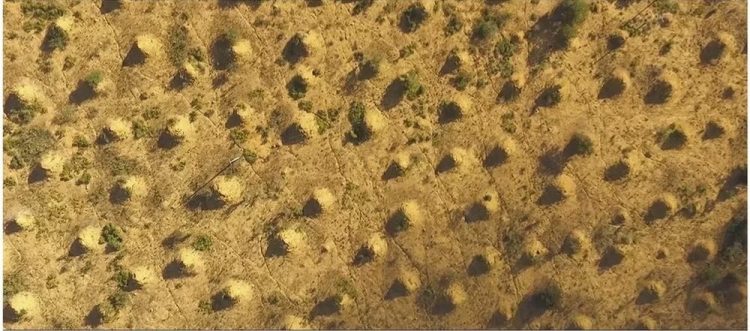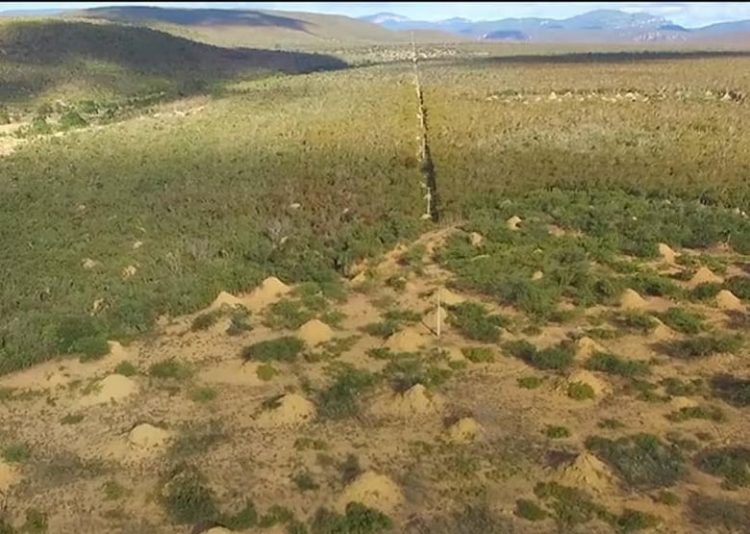4,000-Year-Old Termite Mounds Found in Brazil – Termites are tiny insects about the size of an ant. They live in colonies that may contain 2 million relatives. Despite their small size, they are extraordinary builders. In the seasonally dry, deciduous forests of northeastern Brazil. Obscured by walls of thorny scrubs, is a vast landscape made up of tens of millions of densely packed earthen Termite Mounds? The Termite Mounds findings suggest that the over-dispersed spatial mound pattern isn’t generated by aggressive interactions.
The cone-shaped Termite Mounds are not nested, actually piles of dirt each measuring 30ft wide at its base and twice as tall as a grown man.
The termites excavate waste earth when they burrow tunnels under the soil. It’s unbelievable that finding an unknown biological wonder of this sheer size and age still exists. There are lots of different kinds of termite mounds. Some of them actually keep the termites cool during the day, and a little bit warmer at night.
Investigators approximate that these are more than 200 million mounds. These are covering a huge region approximately equal to the size of Great Britain. The amount of soil excavated is over 10 cubic KM, comparable to the volume of the great pyramids of Giza. The still-inhabited mounds are up to 4,000 years old and so tall they can be seen via satellite.
Therefore, this makes them the largest engineering project by any animal besides humans. Unbelievably, some of these mounds are as old as the Egypt Pyramids themselves. These mounds remain mainly hidden from view in the deciduous, semiarid, thorny-scrub caatinga forests exclusive to this part of Brazil.
The locals call them “murundus” but not too many people outside of the region have heard about it. It was only in recent decades when some of the lands were cleared for pasture that outsiders have come to discover them.
Roy Funch, from the State University of Feira de Santana, first saw these fields of mounds in the 1980s when he arrived in Brazil as a Peace Corps volunteer. A pheromone map might allow the termites to minimize their travel time from any location in the colony to the nearest waste mound.
Investigators have found that this colossal feat of engineering is the work of a tiny species of termite called Syntermes dirus, barely half an inch long. These creatures have been building this landscape for the past four thousand years, and they are still present in the soil surrounding the mounds. Soil samples were collected from the centers of 11 mounds dated the youngest mound is about 690 years old, while the oldest was at least 3,820 years old.
These mounds of discarded earth, have no internal structures save for a single large central tunnel descending into the ground to meet a widespread network of underground tunnels and thin horizontal galleries where the termites store harvested food.
In the night, the termite workers and soldiers emerge from their underground nest and onto the forest floor through small temporary tunnels excavated between the mounds. After their work is done, they return back to the nests and seal the tunnels shut.
There are many questions still to chase. How termite colonies are physically structured because a queen chamber of the species has never been found. Some reports say the mounds can be viewed from space. They can be easily viewed on open-source satellite images, including Google Earth.
Also, Read Chan Chan! The World’s Largest Adobe City in Peruvian Region












